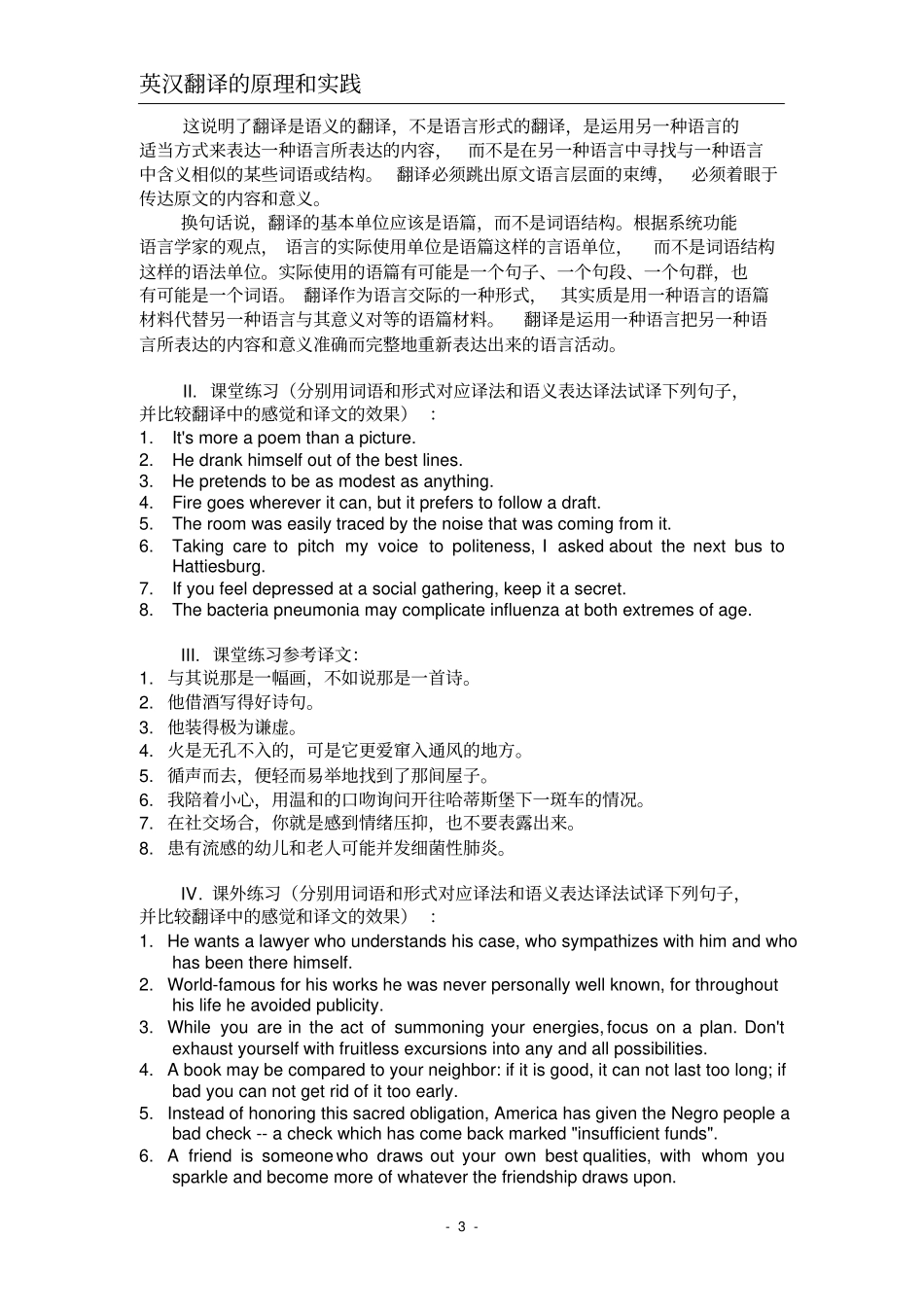英汉翻译的原理和实践- 1 -Unit 1 I. 英汉翻译原理第一讲:什么是翻译?【例1】The history of a tree from the time it starts in the forest until the boards which it yields are used, would form an interesting and, in many instances, an exciting story. (“×”号表示译文有问题,下同)×树的历史开始于森林中,直到生产为木板后被使用为止,成为一个有趣且有许多事例的激动人心的故事。上面这句话的原文实际上主要说了两点内容:1、树的历史的起迄时间2、树的历史是怎样一回事【译文】一棵树,从它在森林中生长起直到被制成木板使用为止,这段历史会构成一个饶有趣味的故事,在很多情况下这个故事十分激动人心。【例2】There are two regulatory systems which interact. One timing system comes from the evidence of our senses and stomachs, and the periodicity we experience when living in a particular time zone. ×有两个调节系统相互作用。一个定时系统来自于我们的感官和胃的证明,就是当我们生活在一个特定的时区所经历的周期性。【译文】人体有两个相互作用的时间调节系统。一个时间调节系统依据感官和胃发出的信息,依据我们生活在某个时区所体验的周期性规律。寻找对等词语和结构然后将其串接成句的翻译方法,常表现如下:1、简单语句的译文虽然生硬,但基本可读。如:【例3】I can see three different types of composers in musical history, each of whom creates music in a somewhat different fashion. ×我能看到音乐史上有三种不同的作曲家,他们中每一个人以某种不同的方式创作音乐。【译文】我发现音乐史上有三类作曲家,他们各自的音乐创作方式有所不同。2、较复杂语句的译文似通非通,甚至不知所云。如:【例4】The traditionalist type of composer begins with a pattern rather than with a theme. The creative act with Palestrina is not the thematic conception so much as the personal treatment of a well-established pattern. ×传统主义型作曲家始于某种格调而非某种主题。帕莱斯特里纳的创作行为不太像对固定格调进行个性化处理的主题概念。【译文】传统型作曲家是从形式出发而不是从主题出发进行创作的。帕莱斯特里纳的创作不是主题的构思,而是对固...


